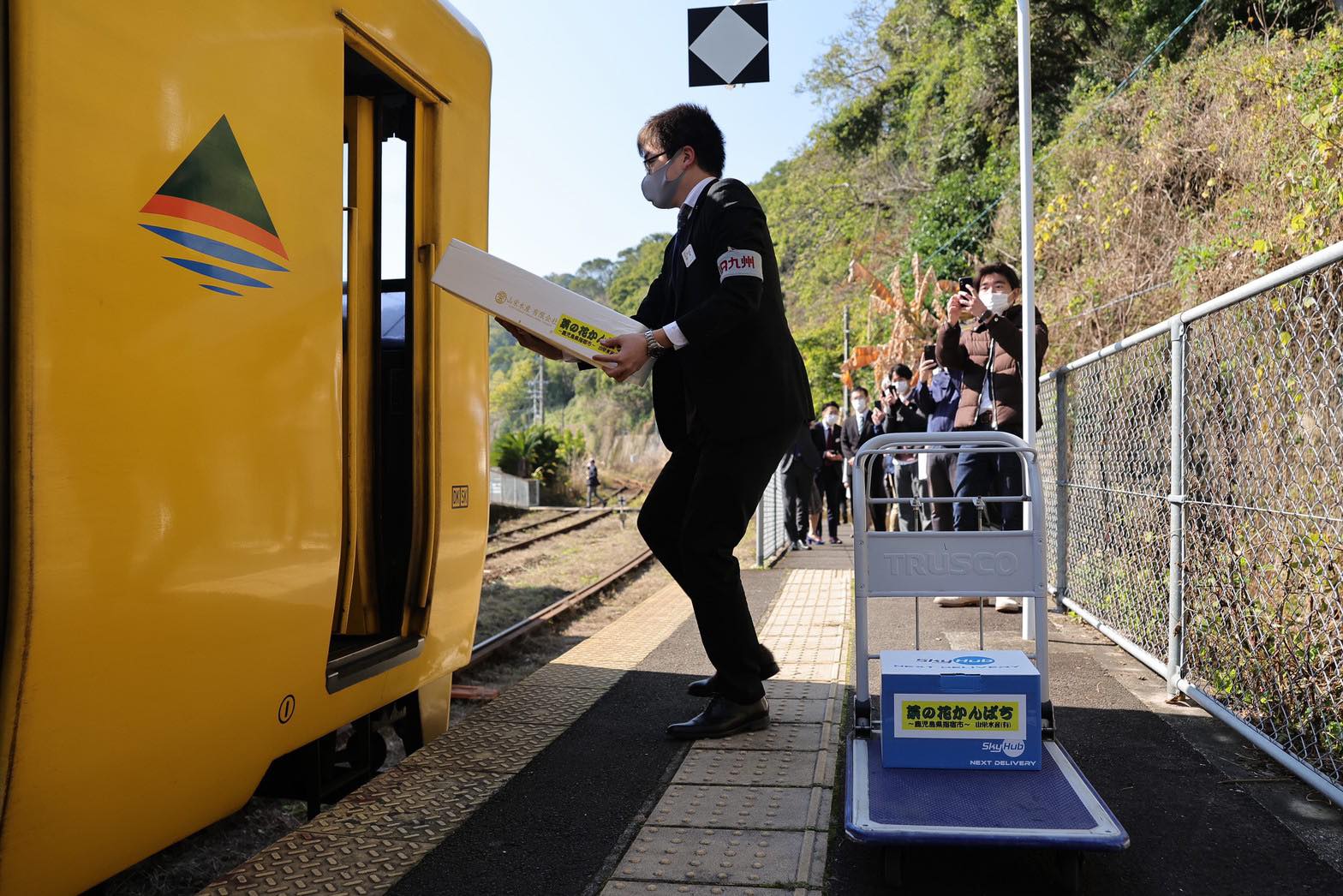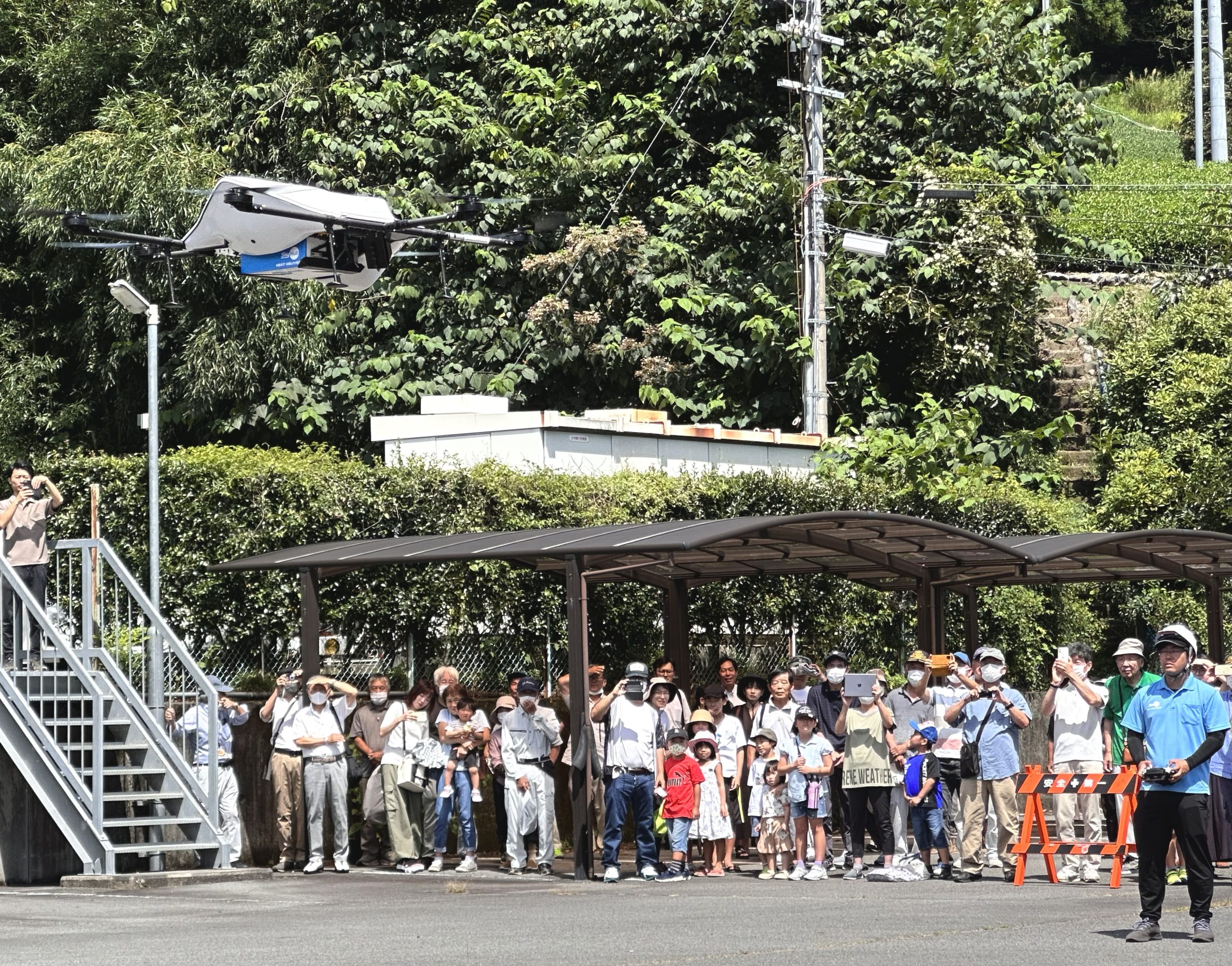

Achievements/case studies
Kagoshima Prefecture Regional Problem-Solving Drone Demonstration Experiment in Hioki City and Ibusuki City

Aeronext Inc., Change Kagoshima Inc., Seino Holdings Co., Ltd., KDDI SmartDrone Inc. conducted a demonstration drone experiment in Hioki City, Kagoshima Prefecture (Mayor: Yoshitaka Nagayama) on Tuesday, February 14 and in February 2023, conducted a demonstration experiment in Ibusuki City, Kagoshima Prefecture, using drones to solve local issues in Kagoshima Prefecture. These experiments were conducted as part of the FY2022 Kagoshima Prefecture Subsidy Program for Drone Experiments Addressing Regional Issues.

Demonstration Experiment Overview
1.Content and Objectives
This demonstration was conducted using the “FY2022 Kagoshima Prefecture Subsidy for Drone Demonstration Experiments to Address Local Issues”, a Kagoshima Prefecture project in which Change Kagoshima Inc. was selected as the consortium representative. The project is also aimed at the societal implementation of a new smart logistics*1 “SkyHub®”*2, that combines drone delivery and land transportation, which is being developed and advanced by Seino HD and Aeronext. The drone was operated by NEXT DELIVERY, a subsidiary of Aeronext, which is mainly engaged in the drone delivery service business.
2.Experiment and Validation Items
The first step in this verification experiment is to address regional issues of “shopping refugees” in Hioki City by providing daily necessities and medical supplies to local residents who will serve as monitors, and by providing shopping services and drone delivery in disadvantaged areas with few shopping options (for both shopping locations and items). In Ibusuki City, a drone was used to transport freshly produced local goods to the consumer’s location in a short time. In this verification experiment, a drone was used to transport mixed cargo and passengers from the roadside station Yamakawa Port Okaido to Yamakawa Station, and from the station to the consumption area by JR Kyushu passenger train, arriving at the consumption area Hakata in the evening of the same day and delivering the products to restaurants. We also investigated the “feasibility” and “sustainability” of the established business model from the viewpoints of both service users and providers through questionnaires and other means.
3. Demonstration Implementation Structure
Overall project planning and management: Change Kagoshima
Aircraft operation and demonstration planning (route selection, etc.) : Aeronext, KDDI SmartDrone
Demonstration planning (advice on logistics use cases, etc.): Seino HD
Demonstration projects (provision of assets, freight consolidation, etc.): JR Kyushu
Site Provision: Hioki City, Ibusuki City
4.Details of the Implementation
One of the local issues identified through surveys and studies in this project is the problem of “shopping refugees”. In this demonstration project, in order to solve this problem through drone logistics, a local supermarket in a densely populated area was used as a shopping agent for a “health food set” (approx. 2.4 kg) consisting of the products ordered by the resident monitors acting as customers, and the products were delivered by drone in approximately 10 minutes over a distance of 4.4 km from the Ogi Community Center (Hioki City), the take-off point, to the Takayama Community Center (Hioki City), a one-way trip.

The aircraft was AirTruck*3, Japan’s first logistics-specific drone developed by Aeronext, and performed Level 2 flights (visually-guided autonomous flights over uninhabited areas). The aircraft was controlled by the SmartDrone Tools*5 operation management system developed by KDDI SmartDrone, which enables remote control and autonomous flight of the aircraft using mobile communications.
The products arrived in perfect condition and were safely delivered to the hands of the community monitors who were waiting for them on the grounds of the Takayama Community Center. A community monitor who received a product delivered by drone said, “Nowadays, various technologies are making things more convenient. When I was younger, I couldn’t have even imagined this. It’s a dream come true to have things delivered by drone,” he commented.

In addition, “Nanohana Kampachi” and “Sakuradai,” specialty products of Ibusuki City, were collected from the roadside station Yamakawa Port Iokaido, and a landing site was secured at a parking lot near the nearest Yamakawa Station on the JR Ibusuki-makurazaki Line, where delivery was conducted by drone (“Nanohana Kampachi” was sent by land because it was beyond drone loading size). Afterwards, they were loaded onto a local train departing from Yamakawa Station bound for Kagoshima Chuo Station, and then onto the Kyushu Shinkansen from Kagoshima Chuo Station, and transported to Hakata Station, where they were delivered to a restaurant in JR Hakata City Kuuten, where they were served to customers during evening hours.

The combined use of trucks, drones, and passenger trains (conventional and Shinkansen) is expected to bring various benefits to both residents and delivery companies, such as shortening the time it takes for cargo to arrive, reducing truck drivers’ working hours, and reducing fuel oil consumption by shortening the distance traveled.





